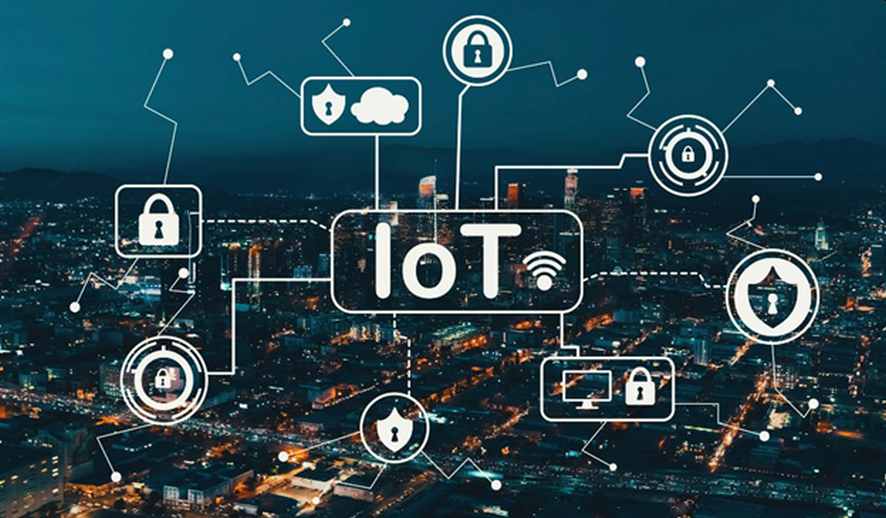Top 5 Solutions Changing IoT in 2023

Organizations, institutions, and households are steadily integrating the Internet of Things (IoT) into their daily activities. According to The Insight Partners, the global IoT market is projected to become a $2.27 trillion industry by 2028, growing at a CAGR of 29.4 percent for the period 2022 to 2028. Significant growth is expected in both the enterprise and consumer IoT sectors.
IoT technology presents vast opportunities across different industries and in households and personal lives. However, it also comes with a host of challenges, which are also opportunities for businesses that are coming up with new products and services.
Companies have been eyeing to take advantage of the new needs created by the growing prominence of the Internet of Things. Featured below are five of the most promising solutions or business models related to IoT.
For IoT Security: Sternum
One of the biggest concerns of widespread IoT use is security. IoT devices are connected devices, which means they become part of home or enterprise networks, making them additional attack surfaces or vulnerability points that threat actors can exploit. Sternum addresses this challenge by providing autonomous IoT security and observability. Sternum specializes in patented technology for the development, protection, and management of IoT, IoMT (Internet of Medical Things), and IIoT (Industrial Internet of Things) devices.
Sternum provides solutions for medical, industry 4.0, critical infrastructure, and smart city applications. It offers a proprietary Embedded Integrity Verification agentless security system, which can be directly integrated into binary and non-binary code to enable runtime protection even on third-party components. Additionally, Sternum offers a cloud-based analytics system called Analytics and Detection System (ADS) that facilitates real-time visibility for any kind of device. This system collects various data to support advanced analytics and asset management for distributed devices.
Sternum changes the way IoT security is achieved by providing IoT device makers the ability to continuously ensure the security of IoT devices that are incapable of having their own standalone security systems because of resource limitations.
For Improved Business Performance: Datanomics
Enterprises that have digitized and embraced IoT naturally generate vast amounts of data, which is highly useful in improving business efficiency if these enterprises know how to take advantage of it. Analytics and AI startup Datanomics sees the opportunity to fill a need in this paradigm, hence it is offering solutions that take advantage of the growing adoption of IoT to enable optimum business outcomes.
Datanomics deploys IoT devices or gathers data from existing enterprise IoT assets to accumulate Big Data and undertake predictive analytics. The data generated is also used to train a machine learning system to be used for different purposes. Datanomics offers six major solutions, namely demand forecasting, automated shelf monitoring, recommendations, predictive maintenance, advanced process control, and industrial video analytics.
Datanomics specializes in the needs of the retail, consumer goods, and industrial sectors. Its solutions allow companies to focus on more productive opportunities, ensure efficient operations, and target customers more effectively.
For Decentralized Wireless Infrastructure: Helium Systems
Can cryptocurrency and a “new internet” for IoT devices be related? This is what Helium Systems offers. This California-based startup seeks to build a network exclusive to IoT devices, separate from the conventional internet most IoT devices are connected to. As Helium builds this new network, it rewards users (hotspot owners) with a cryptocurrency called HNT.
Helium is dubbed as the first peer-to-peer wireless network designed to create a secure mechanism for the Internet of Things. It is a decentralized platform with blockchain beneath it. It is built with open-source technology to ensure full transparency and reliability. It depends on “Proof of Coverage” and a new algorithm derived from HoneyBadger BFT for its secure operation.
This game-changing attempt to establish a new way for IoT devices to interconnect uses a new technology created by Helium Systems called LongFi or long-range WiFi. It is designed to build a new internet through a global mesh of routers operated by everyday people or establishments.
The amount of HNT given to participants in Helium’s network building is based on the quality of the coverage they provide as well as the volume of LongFi sensor data they transmit for devices using the network.
For Reprogramming Your Business: Particle
Particle offers a full stack platform-as-a-service solution that allows organizations to more efficiently connect, deploy, and manage apps in IoT or connected devices. In other words, it makes it significantly easier for anyone to build, deploy, and operate connected products.
Particle offers the tools, insights, and resources necessary to achieve seamless IoT software, hardware, and connectivity interoperation. This allows businesses to link their products easily without compromising security. It also supports broad scalability and customization through reprogrammable and reconfigurable tools for custom app development.
With over 270,000 developers using its platform, Particle is helping forward-thinking companies in accelerating their growth, improving customer experiences, and becoming more competitive as they harness the potential of IoT devices for various use cases. Particle is already being used in building IoT systems for the smart energy, light electric vehicle, HVAC, emissions monitoring, and industrial equipment monitoring sectors.
For Cellular Connectivity: Hologram
Hologram is an IoT connectivity solution. However, instead of using WiFi or LongFi (as initiated by Helium Systems), it aims to harness the power of cellular connectivity, from 2G to 5G. It provides a global IoT SIM card and global coverage to connect devices directly in all parts of the world where there is a cellular connection. This broadens the scope of IoT connection, as it no longer requires an ISP service to enable connections.
This IoT solution is particularly helpful for industries that use IoT devices in different locations, including those that travel across vast distances. Companies involved in freight and shipping, logistics, car rentals, manufacturing, agriculture, and retail can benefit from Hologram’s non-ISP-dependent IoT interconnectivity.
To date, Hologram is already available in over 200 countries under partnerships with more than 470 cellular networks, from Afghanistan to Zimbabwe.
Widespread use of the Internet of Things is inevitable as businesses and most other parts of society digitalize and deploy interconnectivity solutions. In line with this, businesses need to innovate and create innovative products and solutions that tackle opportunities and challenges that emerge with growing IoT deployment. The five solutions above are just a few of the many other innovations to come as IoT becomes ubiquitous.

